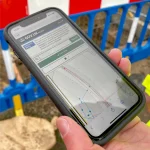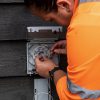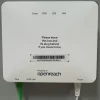The Top 7 Fastest UK Home Broadband ISPs for October 2013

The latest anecdotal survey of big fixed line home broadband ISP performance in the United Kingdom for October 2013 has found that the average download speed is now 16.842Mbps and the average upload speed topped 2.896Mbps. Both results have held fairly steady since September.
According to Broadband.co.uk, Plusnet saw the biggest monthly increase (+3.39Mbps) in average download speeds to total 15.990Mbps over September’s results. But that has not been enough to unseat BT from second place on 17.369Mbps. As usual Virgin Media’s cable platform has helped it to hold 1st place (fastest broadband ISP) with a download rate of 33.989Mbps.
Advertisement
Meanwhile the story for upload speeds is slightly different and PlusNet has managed to increase its performance from 3.212Mbps in September to 4.005Mbps now, which has forced Virgin Media out of 2nd place and dropped them to third (note: virgin also lost some upload speed this month). It will also be interesting to see if Virgin’s softer Traffic Management policy has had any impact on the next batch of results.
The other big mover has been EE, which saw their download rate jump from 7.317Mbps last month to 9.080Mbps now and this was enough to pull them up from 6th to 5th place.
Top 7 UK ISPs – Download Speed (Megabits per second)
1. Virgin Media – 33.989Mbps
2. BT – 17.369Mbps
3. PlusNet – 15.990Mbps
4. Sky Broadband – 9.975Mbps
5. EE (Orange) – 9.080Mbps
6. TalkTalk (Tiscali) – 7.338Mbps
7. O2/BE Broadband (BSkyB Owned) – 6.906MbpsTop 7 UK ISPs – Upload Speed
1. BT – 4.702Mbps
2. PlusNet – 4.005Mbps
3. Virgin Media – 3.214Mbps
4. Sky Broadband – 1.926Mbps
5. EE (Orange) – 1.899Mbps
6. TalkTalk (Tiscali) – 0.870Mbps
7. O2/BE Broadband (BSkyB Owned) – 0.816Mbps
Disclaimer: Please take anecdotal data like this with a huge pinch of salt. Every home is different and performance can be affected by all sorts of issues, many of which are beyond the ISPs ability to control. We do not consider the above data to be a reliable barometer for individual users but it can help to highlight other changes in the market.
In addition, the faster speeds from the latest “super-fast” connections (FTTC, FTTP etc.) can have a very disproportionate impact compared with the older and often significantly slower copper-based ADSL2+ services that dominate most homes. Sadly the source data doesn’t separate the results out by technology or include smaller ISPs (not enough data). If smaller ISPs were included then B4RN or Hyperoptic’s 1000Mbps capable FTTP/H platform would probably top the charts.
Advertisement
Mark is a professional technology writer, IT consultant and computer engineer from Dorset (England), he also founded ISPreview in 1999 and enjoys analysing the latest telecoms and broadband developments. Find me on X (Twitter), Mastodon, Facebook, BlueSky, Threads.net and Linkedin.
« Gov Still Hopes for 90% Superfast Broadband in 2015 Despite BT Bung Fear






















































Comments are closed